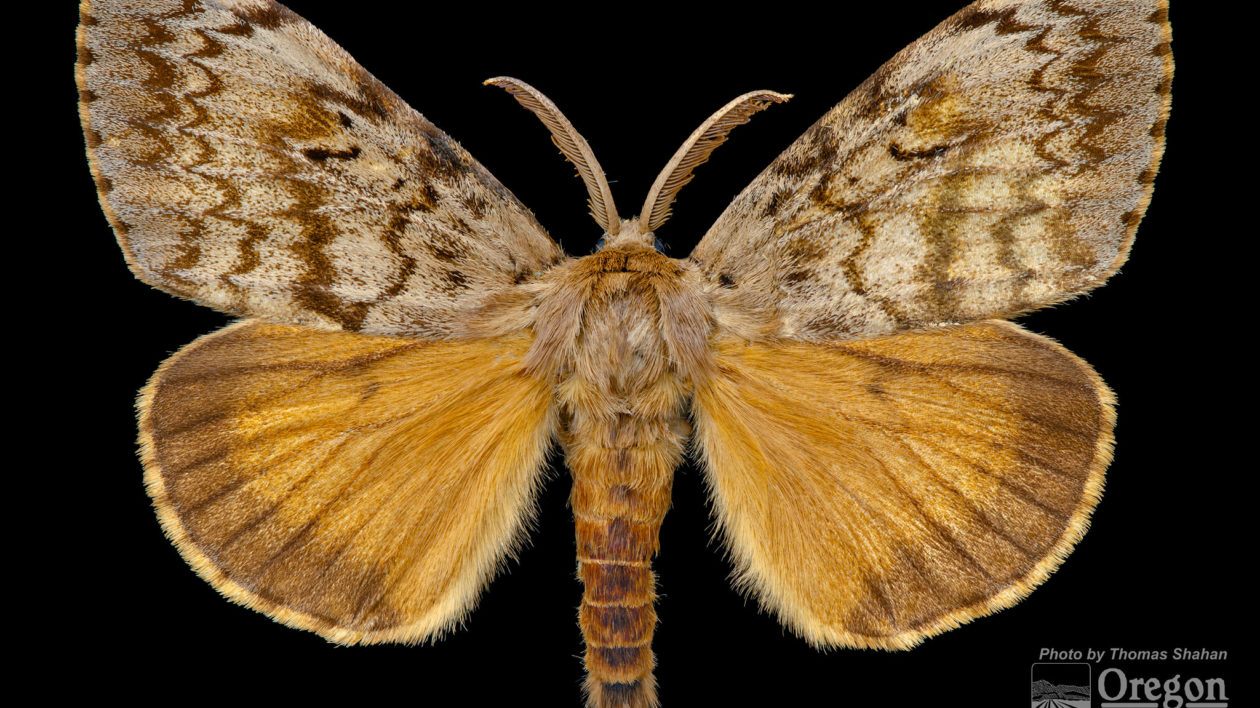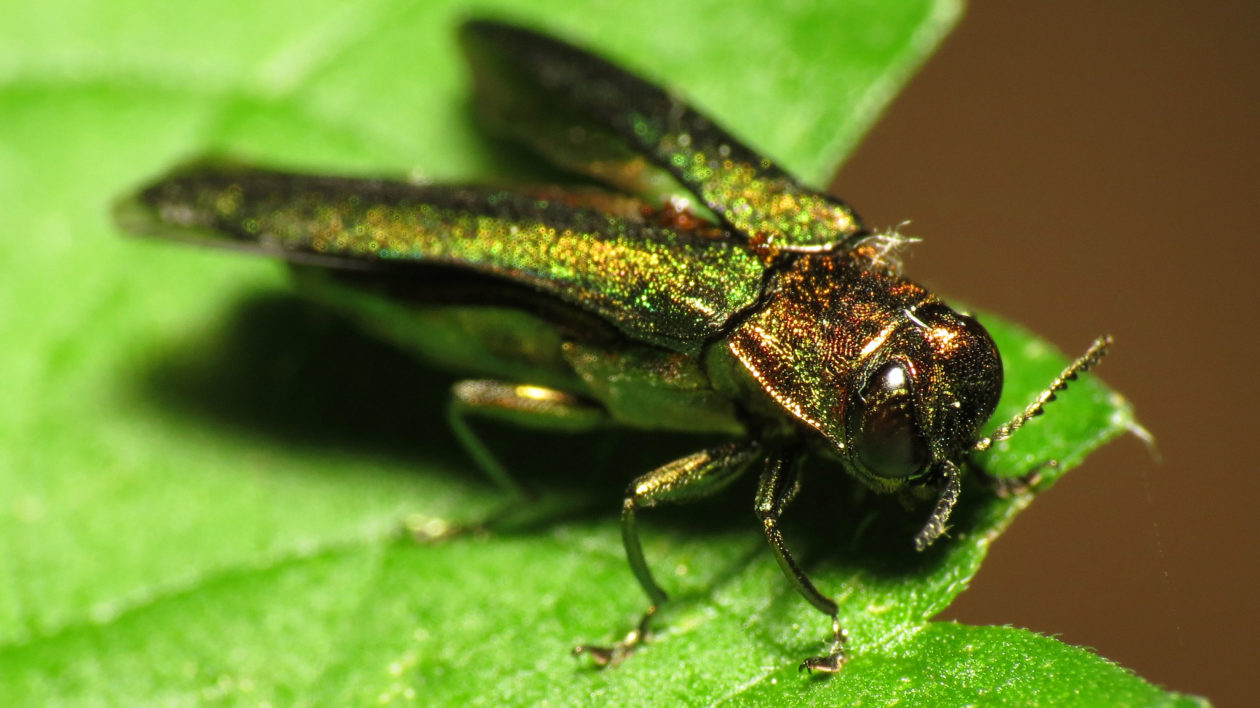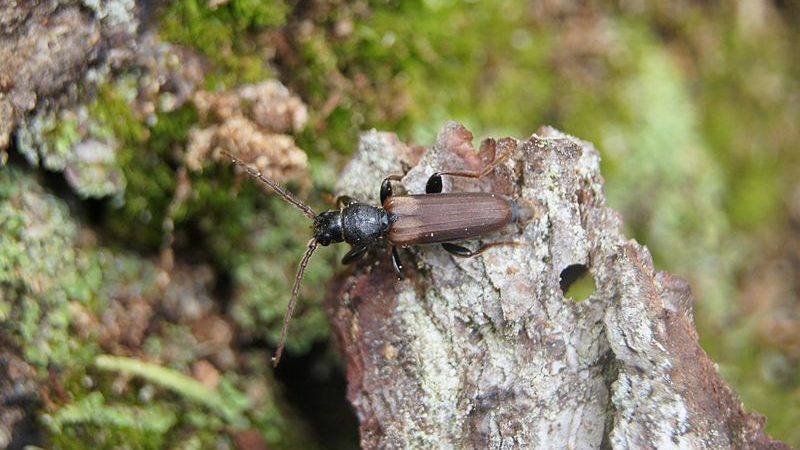You’ve seen the headlines. Northern giant hornets – frequently called “murder hornets” – have landed in North America. The hornet makes for a dramatic insect villain: It raids honey bee colonies, decapitating all the worker bees, then feasts on the helpless larvae. According to Smithsonian Magazine, the hornets can wipe out a honey bee colony in hours.
As if that isn’t bad enough, the hornet’s sting is likened to “being stabbed with a hot metal pin.”
The northern giant hornet likely arrived in North America unintentionally, possibly a stowaway on a cargo ship from another continent. The hornets are secondary cavity nesters – they nest in holes that already exist. Shipping containers, which have long thin tunnels to allow forklifts and cranes to load them on and off of cargo ships, might offer the right conditions to hide a stowaway hornet.
While the northern giant hornet dominates the news, this is hardly a unique story. Countless insects (and other animals and plants) arrive hidden in cargo each year. “In most instances, these species never become established in their new home,” says Leigh Greenwood, forest health program director for The Nature Conservancy. “But every once in a while, all the conditions are right, and the species becomes widespread. Thankfully, it’s most likely the northern giant hornet will not become one of those species.”
That’s because both Washington and British Columbia have robust invasive species detection efforts. The hornets were reported and agricultural agents jumped into planning, outreach, and coordination. The northern giant hornets are big and showy and thus relatively easy to find and hopefully, to eliminate quickly.
As such, it’s hardly the most frightening of insect invaders. For North America’s forests in particular, non-native insect pests can be a horror movie. These are pests that keep invasive species experts up at night, for very different reasons.

Spotted Lanternfly
Just one spotted lanternfly doesn’t look creepy; if you like insects, you might even call it cute. But don’t raise a toast, as this Asian species could impact your very mug of beer or glass of wine. That’s because the spotted lanternfly is devastating to hops and grapes, as well as a long list of fruit trees.
And in large numbers, they’re, well, really gross. They mass by the thousands on trees, and their poop rains down on unsuspecting passersby.
They likely arrived in much the same manner as the northern giant hornets; in this case, probably as egg cases hidden on tile or stone shipments. Unlike the hornets, they were not detected promptly, with experts believing they were in Pennsylvania for at least two years before anyone noticed.
Today, it costs more than $15 million a year to control them.
“Just think if they’d been found even earlier, before they’d had a chance to breed and spread,” says Greenwood.
The species can be difficult to find in fall and winter, as it lays very well camouflaged egg cases in brush, firewood, even on your backyard grill. You might never know they’re there at first. That is, until summer comes, and their crap showers your head.

Flighted Spongy Moth
Growing up in Central Pennsylvania, I remember one summer when the trees on nearby hills stood bare, like it was December. Except it was July. Spongy moths (Lymantria dispar dispar) had defoliated entire patches of forests, a depressing sight.
These invasive moths have waxed and waned in northeastern forests for decades, subject to intense control efforts. In recent years, through advances in management techniques, the spread has slowed and severe outbreaks have become less frequent. But then there’s the flighted spongy moth (Lymantria dispar asiatica). It’s like the more familiar spongy moth, only worse.
“The flighted spongy moth feeds on a much greater variety of trees,” says Greenwood. “The females have the ability to fly really far, up to 40 kilometers, so they can spread much more rapidly.”
They could prove devastating to western North American forests in particular, as they feed on alder, quaking aspen, Douglas fir, fruit trees and more than 600 other species. Since the early 1990s, the species has been found in agricultural agencies’ moth traps every few years, as part of coordinated prevention efforts. Emergency control crews are dispatched, and each of these small outbreaks have been eradicated.
But it’s a Sisyphean task. As the Don’t Move Firewood campaign notes, “The insect is attracted to lighting at ports, where the females can lay their eggs on ships at anchor or the containers on them.”
“They keep being reintroduced and then eradicated,” says Greenwood. “It shows the importance of early detection. They keep coming, and we’ve got to keep finding them early enough to take effective action.”

Asian Longhorned Beetle
The Asian longhorned beetle hides in wooden packaging; it was introduced to North America and Europe at least 16 times since the early 1990s. It attacks maples, elms, willows and dozens of other plant species. And it has cost $640 million to control so far.
But as invasive species go, the story of the Asian longhorned beetle contains a bit of good news. The control efforts have largely contained the species to only three remaining infestation areas. That’s partially because, like the northern giant hornet, Asian longhorned beetles are large and showy. Their signature antennae – the so-called “horns” – are a distinguishing feature. As such, alert homeowners often report the beetles, enabling state and federal agencies to target and control the beetles.
“People spot them and report them,” says Greenwood. “They’re usually not well hidden at all.”
Regulations on how wood packaging is treated before it can be shipped internationally have helped prevent new introductions of this pest. But the Asian longhorned beetle could still arrive again. Invasive species managers can celebrate successes, but they can’t rest. There’s always a chance of a species slipping back in.

Emerald Ash Borer
This one hits home. Several years ago, I was in northern Pennsylvania, reporting on the emerald ash borer reaching a Nature Conservancy preserve. As I discussed the story with my parents, I wondered if this pest would reach our own family woodland in Central Pennsylvania.
The next time I visited, I was shocked to see every ash tree on our property dead or dying, many snapped off mid-trunk. The emerald ash borer had arrived. Actually, it was likely already there when I initially mentioned it to my family.
Yes, the northern giant hornet gets the hype, but the emerald ash borer is much scarier. It’s completely unlike the hornet. It’s so small and cryptic you might never see one. Infested trees remain asymptomatic for several years, so you don’t even know it’s around until it’s too late.
“When it was first detected in North America, forest managers thought they could contain it, but they didn’t realize at that time that trees don’t show early signs of infestation,” says Greenwood. “But this insect has a high reproductive rate. They have a very high rate of spread.”
And they leave a wave of tree devastation in their wake. Even worse, people are accidentally assisting them. According to Don’t Move Firewood, “Outbreaks continue to be found at sites hundreds of miles from the nearest known location – indicating that infested wood continues to be illegally moved.”
As the campaign states: Don’t move firewood. Doing so could help the emerald ash borer and a host of other forest pests far worse than northern giant hornets.

Brown Fir Longhorn Beetles
The brown fir longhorn beetle is now infesting a relatively small area of the United States. But it’s a species that should give us all pause, because it illustrates just how unexpected and even wacky invasive species introductions can be.
Since 1999, these beetles have been reported 20 times in artificial trees. You read that right. Artificial trees. We think of these trees as plastic, but many have wooden bases manufactured in China. Before this problem was understood and addressed, customers would open the boxes to find grubs. While wooden products are supposed to be treated before entering the country, artificial trees with real wood bases had escaped noticed. Because they’re, well, artificial.
“This illustrates the whack-a-mole nature of invasive species detection,” says Greenwood. “Now, regulations are able to address the artificial tree bases, and that problem largely went away. But recently invasive pests have been found in wooden chew toys imported for pet parrots. It can seem never ending. As global trade increases, it creates a mind-boggling array of opportunities for invasive species to arrive.”
You Can Help
You play an important role in reporting new invasive species and helping to stop their spread. Invasive species can spread in some truly bizarre ways, and learning how your activities can play a role is important.
There are reports of people randomly killing wasps and bees believing they are northern giant hornets. Take the time to learn what you’re seeing. If you see a strange insect, a better option is to report it to a professional. Some of the species listed here could have been much worse if no one had reported them. The northern giant hornet was reported quickly by a beekeeper, allowing officials to move in to eradicate them.
“A lot of people are spending time in their yards and neighborhoods now with quarantines and stay-at-home orders,” says Greenwood. “They might notice things they never have before. Report the weird insects you see. You might be preventing a pest outbreak.”
You are really, really unlikely to find a northern giant hornet. But the pest you do report might prove to be a much more devastating invader.




I do believe I have the murder hornets in my back yard, they are feeding on the back of some very grow bushes. They are the size of my little finger
You didn’t mention fire ants.
There are many damaging invasive insects in North America. I focused this blog on invasive insects that damage forests, as in many cases they have fundamentally changed ecosystems. But, yes, fire ants are a real problem. Thanks for commenting.
I will keep this in mind.
However where I live it gets very hot in Summer.
Many Summer days are 115, give or take and we get up to 120 and beyond too.
Do these insects survive in those kinds of temperatures?
I live in Southwest Virginia, where should I report if I see any of these?
This problem will continue as long as we import plants and other goods from Asia. It is my understanding
that Chinese plants do not have to be in quarantine as long as plants from other countries. The barn door is wide open. These insects or their larvae come in containers of all sorts. We are destroying our native trees and plants by giving the green light to so many products. Perhaps if we warehoused these goods for a month or longer, before releasing them onto the market it would be helpful. Add to your list Jumping Worms which are spreading quickly and ruining the very soil we depend upon for growing food and all other plants. Also invasive weeds which are crowding out native plants. Thank you for your article and all the other informative articles that you have written.
There are so many invasive species, of all types. I was blissfully clueless until I took over stewarding the family farm (half woodland). It keeps me awake at night. Lost the ash trees. The oaks are ailing. The ground is covered in monocultures of garlic mustard, honeysuckle or mile a minute. All of which kill or reduce what should be thriving. I’d take a bunch of murder hornets over the devastation humanity has brought to the Eastern US forests through its lax importation rules and pursuit of cheap ‘cr@p’. No sign of balance returning just yet. We live in hope.